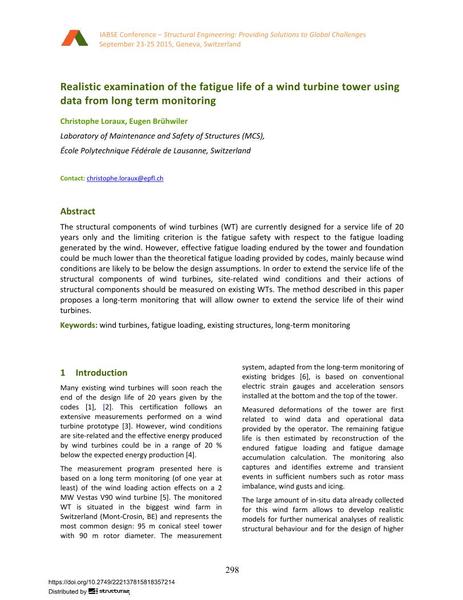Realistic examination of the fatigue life of a wind turbine tower using data from long term monitoring

|
|
|||||||||||
Bibliographic Details
| Author(s): |
Christophe Loraux
(Laboratory of Maintenance and Safety of Structures (MCS), École Polytechnique Fédérale de Lausanne, Switzerland)
Eugen Brühwiler |
||||
|---|---|---|---|---|---|
| Medium: | conference paper | ||||
| Language(s): | English | ||||
| Conference: | IABSE Conference: Structural Engineering: Providing Solutions to Global Challenges, Geneva, Switzerland, September 2015 | ||||
| Published in: | IABSE Conference Geneva 2015 | ||||
|
|||||
| Page(s): | 298-304 | ||||
| Total no. of pages: | 7 | ||||
| Year: | 2015 | ||||
| DOI: | 10.2749/222137815818357214 | ||||
| Abstract: |
The structural components of wind turbines (WT) are currently designed for a service life of 20 years only and the limiting criterion is the fatigue safety with respect to the fatigue loading generated by the wind. However, effective fatigue loading endured by the tower and foundation could be much lower than the theoretical fatigue loading provided by codes, mainly because wind conditions are likely to be below the design assumptions. In order to extend the service life of the structural components of wind turbines, site‐related wind conditions and their actions of structural components should be measured on existing WTs. The method described in this paper proposes a long‐term monitoring that will allow owner to extend the service life of their wind turbines. |
||||
| Keywords: |
wind turbines existing structures fatigue loading long‐term monitoring
|
||||
